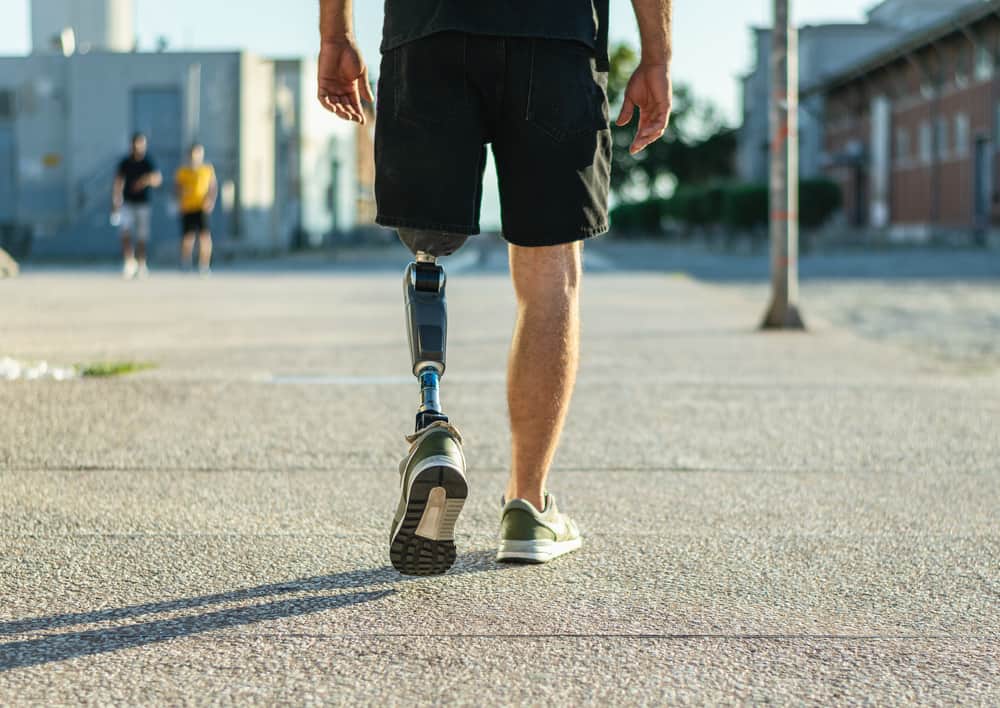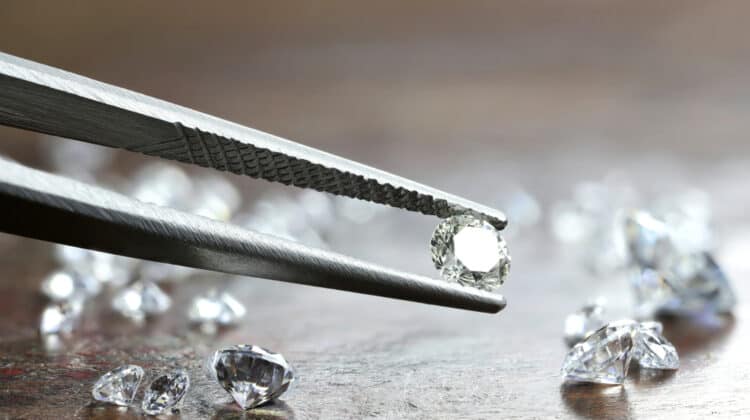
Whether through accident or genetic anomaly, some individuals require the use of a prosthetic.
When limbs either don’t develop correctly or they’re lost through an accident or injury, those individuals aren’t without hope.
Prosthetics have been around for centuries.
The earliest prosthetic discovered dates back to 950–710 BCE in Ancient Egypt.
Today, prosthetics restore almost all functions to the one wearing them, but it comes with a cost.
Depending on the complexity of the prosthetic, they can cost anywhere from $5,000 to $50,000.
Here are 10 reasons prosthetics are expensive.
Why Are Prosthetics So Expensive? (Top 10 Reasons)
1. Children Outgrow Them

One of the reasons prosthetics are expensive is that children regularly outgrow them.
Children born without limbs or who had to have their limbs amputated are one of the main demographics for prosthetics.
Having a prosthetic helps them develop normally as a child since they’re able to do the same things as everyone else.
For example, a child born without a leg might not be able to participate in sports as easily.
If that child receives a prosthetic leg, then they can, and they might go on to develop friends around the sport or even become an athlete.
A child without a finger or hand may suffer from mechanical developmental problems.
When they receive a prosthetic hand or finger, then they’re able to use their body in the way that their brain wants to.
The problem with children is that they’re always growing.
The limbs they’re born with are growing as they do, but the prosthetic can’t since it’s synthetic.
This creates a problem, especially if the limb is a leg.
The child may face serious pain if they attempt to use a leg that’s shorter than another.
The old prosthetic doesn’t support them anymore.
As a result, the child’s parents have to shell out more money to buy new prosthetics over the years.
Children grow for some time.
Some don’t even stop growing until their mid-20s.
Because of that, their parents have to keep buying new prosthetics to coincide with their growth.
That means they’re paying anywhere from $5,000 to $50,000 every few years.
Even if a limb only costs $5,000, that number quickly adds up over the child’s lifetime.
Prosthetic makers haven’t developed a prosthetic that grows with the child yet.
Since children grow and need replacement prosthetics every few years, the cost of them increases dramatically over a lifetime.
That’s what makes them so expensive for parents.
2. Wear And Tear

Another serious problem is the fact that adults also need to regularly pay for new prosthetics.
While children outgrow their prosthetics, adults tend to wear theirs down.
As an adult, they’re responsible for working, exercising, and doing other things expected of adults.
While those with their limbs experience pain and soreness as a result of using and abusing their bodies, those with prosthetics end up wearing down their parts.
The human body can regenerate itself to a point.
Prosthetics can’t since they’re not organic.
When they become damaged, they remain damaged unless they’re able to be repaired.
Whether the individual walks on the prosthetic, uses it to type or write, or do anything with it, the use of the prosthetic wears it down.
At some point, the prosthetic is either going to break or stop functioning.
This results in the individual needing to go get another one.
They’ll have to shell out another $5,000 to $50,000 for a new part.
The worst part is that the life expectancy of prosthetics isn’t great.
Most tend to last anywhere from a year to five years.
Those who don’t use the prosthetic as much or are very mindful of it can sometimes get them to last up to 20 years.
However, in most cases, people need prosthetic replacements more often than not.
Someone who uses their prosthetic regularly in their field or lifestyle may need to replace it every other year even.
That means they’re regularly spending around $5,000 to $50,000.
This amount quickly adds up and makes owning and wearing a prosthetic extremely expensive.
Prosthetics are expensive because they’re subject to wear and tear and need replacing.
Adults have to keep replacing their prosthetics throughout their lifetime which means they have to keep paying a high price for them.
3. Specialized Prosthetics

While manufacturers make general prosthetics for everyday use, some manufacturers also make specialized prosthetics.
People who have an interest in mountain climbing, for example, require a special kind of leg, foot, or arm to do the activity.
A standard prosthetic won’t give them the flexibility, agility, or strength to scale a mountain.
To ensure the prosthetic helps rather than hinders the wearer, the manufacturer has to go to the drawing board.
At the drawing board, they design a completely new type of prosthetic.
Then they prototype it and test it.
If the prototype passes its tests, then they can start to manufacture it.
If the prototype doesn’t pass the test, then they’re back to the drawing board and coming up with new ideas.
This is an expensive process and sometimes the materials needed to make the prosthetic work are also expensive.
Since it’s an expensive process, you can expect the price of the prosthetic to be just as expensive.
The same goes for prosthetics used in athletics.
Athletes need specific types of prosthetics in order to compete.
The prosthetic can’t give them an edge, or else they’d be cheating, but it has to be able to support their level of fitness.
Making such a prosthetic isn’t easy, nor is it cheap.
Like anything else that’s specialized, the process of designing and producing the item is expensive.
To pay for the costs associated with it, the manufacturer has to make the price higher.
Prosthetics are expensive when they’re built for a specific or special purpose.
4. Complexity

Another reason prosthetics are expensive is because some of them are extremely complex.
Some prosthetics are simple.
A toe, for example, only needs to support the body.
It may have a hinge-like property that allows the toe to bend, but otherwise, it doesn’t have to do anything else.
A hand, on the other hand, is far more complex.
The hand connects the arm to the body’s fingers.
Fingers are an important part of life.
Humans use them to do everything from communicating to eating food.
Without a hand, the person doesn’t have fingers.
However, a simple prosthetic wouldn’t suffice either.
It’s not enough to have a hand with some fingers on it for aesthetic purposes.
The prosthetic needs to be able to mimic the function of a hand.
It needs to be able to translate stimuli from the brain to get fingers to work.
Because of this, a hand is far more complex than a toe or even a leg.
Even a leg is relatively simple since it only needs to bend when one is moving.
The more complex a prosthetic is, the more expensive it’s going to be because more design has gone into it.
It blends computer technology with raw materials.
It takes the place of a missing hand but also is smart enough to act as a natural hand.
That sort of complexity means it needs some delicate parts and components.
The cost of producing a complex prosthetic is very expensive since it’s a difficult process using expensive materials.
Since it takes a lot of time and expensive materials to make, the resulting price of the finished product is also expensive.
Complex prosthetics are expensive because of the cost of materials and difficulty in design.
5. Skilled Labor

Part of the reason prosthetics are expensive is the cost of labor associated with them.
It takes a team of skilled professionals to design and produce a prosthetic.
They’re not so simple as to be able to go through mass production in a factory.
Instead, each case requires careful study by a company.
The team then designs the prosthetic for the individual.
The laborers then carefully put it all together.
If something doesn’t fit right, then the prosthetic goes back to the workers for another attempt.
Because this type of work requires skill and understanding, the wages they earn are higher than most other jobs.
That adds to the total cost of the prosthetic, too.
The more complex or larger a prosthetic is, the longer it takes for the item to finish processing.
Since it requires more time, then the workers receive more pay.
That means the price has to be higher to cover that pay.
Prosthetics are expensive because it uses skilled workers to make them.
These workers tend to earn more money than unskilled labor.
6. Insurance Coverage

The good news for some people is that, if they have insurance, their insurance company usually covers most of the cost of the prosthetic.
This isn’t always the case, however.
Since insurance does tend to cover the cost of a prosthetic, medical companies can charge a higher amount.
They do so knowing that the patient will only need to pay a fraction of the price.
Granted, that fraction may still be $1,000 or even $10,000, which is still very expensive.
Regardless, because insurance companies pay the bulk of the cost for prosthetics, medical companies don’t worry too much about bringing down the price.
They know that they’re going to get paid because insurance companies are reliable.
If they were selling to someone without insurance, then they might be unsure if the individual could afford the full price of the prosthetic.
They may be less willing to sell the product to them.
It’s important to keep in mind that, while these companies are helping to serve the disabled community, they’re also running a business.
Their profits are important to them.
Because insurance companies cover the bulk of the purchase no matter what the price is, some medical companies may take advantage of that by inflating the price a little.
Unfortunately, this means that the individual is going to pay an expensive price, no matter how much their insurance covers.
For those without insurance, it means they may not be able to ever afford a prosthetic.
Prosthetics are expensive because insurance companies foot most of the bill no matter the price.
This encourages medical manufacturers to sell at high prices.
7. Regular Doctor Visits

The price of the prosthetic itself isn’t the only thing that makes owning and wearing a prosthetic expensive.
You also have regular doctor visits.
The problem with many prosthetics is that patients aren’t able to adjust them on their own.
In most cases, if the socket needs altering, they have to see their doctor who can do it for them.
Unfortunately, this means that they’re likely going to have many doctor visits in the future.
Since the doctor is seeing one patient more often than others, they might need to start charging that patient more for their visits.
That’s simply because they’re keeping the doctor from being able to see other, new patients.
Since this impacts how much profit the doctor’s office is seeing, they have to make up for it by providing more expensive services to the few patients that they can see.
This also means that the patient then has to pay for expensive doctor visits to handle problems with their prosthetics.
One way around this is to wear a prosthetic with a socket that’s adjustable by the patient.
Not all prosthetics come with this type of socket, however, so the problem persists.
Prosthetics are expensive because they can make doctor visits expensive.
8. Materials

There’s no question that the cost of materials also makes prosthetics expensive.
One of the biggest problems with prosthetics, especially early on, was the weight.
Children were often unable to use their prosthetics because they were too heavy for them.
Since they didn’t have a limb, they never had the chance to develop enough muscle to support the prosthetic.
With the prosthetic, they’re slowly gaining muscle over time, but they don’t have enough when they start to use the prosthetic.
With time, new materials have started to make wearing prosthetics a bit easier.
The shift to carbon and carbon fiber, for example, has made prosthetics lighter and stronger.
The problem with using carbon fiber is that it’s expensive to make.
It also takes a long time.
For larger prosthetics like legs, it uses a lot of materials in its production.
That means the cost of production is extremely high.
Other prosthetics that need computer chips or other delicate components also use expensive materials in their production.
Because the materials are expensive, the overall price of the prosthetic is also expensive.
Prosthetics are expensive because they use expensive materials in their production.
9. Limited Production

Another driving force behind the high cost of prosthetics is the fact that they’re not mass-produced.
Mass-produced products have the advantage of being cheaper because their manufacturers are able to buy materials in bulk and make their factories efficient.
They streamline everything to produce as many products as they can in a day.
This helps generate a lot of profit and trims down costs which means they can sell at lower price points.
That isn’t the case with prosthetic limbs.
The general public doesn’t require prosthetics.
Only amputees or those born without limbs need them.
As such, it’d be a waste of money if companies were to mass-produce prosthetics.
Unfortunately, this also means that the production process is more expensive than one that produces products en masse.
Without those cost-saving abilities, the manufacturer has to sell the prosthetic at the highest possible price to make good on their investment.
Some of the materials that they use are also difficult to buy in bulk.
Whether it’s sophisticated computer chips, processors, or even carbon fiber, the cost of amassing those materials is expensive.
Prosthetics are expensive because they aren’t mass-produced like other products.
10. Custom-Built

One of the biggest reasons that prosthetics are expensive is because each one is for a specific person.
This isn’t a situation where one size fits all.
Human bodies come in all different shapes and forms.
One prosthetic usually doesn’t fit another person.
As a result, any time there’s an order for a new prosthetic, the manufacturing company has to learn specific details about the individual before they can start to make the product.
They need to know the size, shape, and weight of the individual.
This will determine the materials they use and the size of the prosthetic.
A larger person, for example, is going to need a large prosthetic that can support them.
Someone who is athletic is going to need a prosthetic that can support their level of fitness and lifestyle.
The body also needs shaping for the prosthetic.
For leg prosthetics, the knee has to go through a rounding process to fit the prosthetic the best.
That means that the size and shape of the knee change with time.
The company then has to adjust its own prosthetic to ensure it fits that patient perfectly.
Prosthetics have to fit their wearers snugly or there’s a risk of extreme discomfort or an inability to use the prosthetic.
This means that the company wasted its materials and time if the prosthetic doesn’t end up working.
Prosthetics are expensive because each one is custom-built.
Conclusion
Some steps have been taken to make prosthetics more affordable through 3D printing, but many prosthetics remain expensive.
The cost of materials and the fact that each one fits a specific person drive up the price of the product.
The worst part is that patients often have to buy several prosthetics throughout their lifetime because they wear down through use.
NEXT: Why Are Pickup Trucks So Popular? (Top 10 Reasons)























FYI, Medicare sets the prices; not the prosthetists. I could charge whatever I want for a prosthesis but I will only be reimbursed based on the Medicare fee schedule and my contracted rate with the insurer.